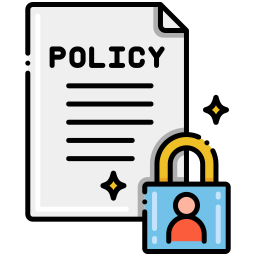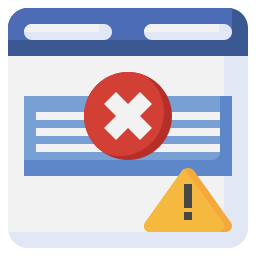Plagiarism Policy
Plagiarism includes copying text, ideas, images, or data from
another source, even from your own publications, without giving any credit to
the original source. Reuse of text that is copied from another source must be
between quotes and the original source must be cited. If a study's design or
the manuscript's structure or language has been inspired by previous works,
these works must be explicitly cited. If plagiarism is detected during the peer
review process, the manuscript may be rejected. If plagiarism is detected after
publication, we may publish a correction or retract the paper.
Irregular manipulation in images includes: 1) introduction,
enhancement, moving, or removing features from the original image; 2) grouping
of images that should obviously be presented separately (e.g., from different
parts of the same gel, or from different gels); or 3) modifying the contrast,
brightness or color balance to obscure, eliminate or enhance some information.
If irregular image manipulation is identified and confirmed during the peer
review process, we may reject the manuscript.
ISRDO is committed to maintaining high standards through a
rigorous peer-review together with strict ethical policies. Any infringements
of professional ethical codes, such as plagiarism, fraudulent use of data,
bogus claims of authorship, should be taken very seriously.
An Initial Plagiarism Check is carried out for every manuscript
submitted to the journals of The ISRDO. The ISRDO is a member of CrossCheck (CrossRef)
and has added all its papers to the CrossCheck database. In this way, also
other publishers can compare their manuscripts with The ISRDO’ papers.
CrossCheck is used through the web-based iThenticate system by uploading a
document and running a similarity check against the CrossCheck database and the
Internet. The check provides a "Similarity Index" which is the
percentage of the manuscript matching other sources. iThenticate does not
determine whether a manuscript contains plagiarism. Therefore, manuscripts with
a high "Similarity Index" are examined if the other matching sources
have been properly cited. We may also use Turnitin or Grammarly.

Acceptable Plagiarism
- Properly cited quotes,
- In-text citations or your reference list, and
- Commonly used phrases that are obviously not considered plagiarism.
- A score higher than 10% is troublesome.
- A score between 5% and 10% it is not bad per standard.
- A score around 5% is reasonable.
Finally, between 5% and 10% of plagiarism is acceptable.
- Level 0: Similarities up-to 10% - Minor similarities, no penalty
- Level 1: Similarities above 10% to 40%
- Level 2: Similarities above 40% to 60%
- Level 3: Similarities above 60%
- In case of Level 0, clear the Thesis to be processed as per the rules
- In case of Level 1, such student shall be asked to submit a revised script of Thesis within a stipulated time not exceeding 6 months.
- In case of Level 2 and 3 –Refer the case to DAIP to deal with as per penalty regulations of ISRDO including de -registration of student, if required
- Level 0: Similarities up-to 10 % - No penalty for minor similarities. However, the author or researcher shall be asked to resubmit the work with 0% plagiarism.
- Level 1: Similarities above 10% to 40% - Shall be asked to withdraw manuscript submitted for publication and shall not be allowed to publish any work for a minimum period of six month.
- Level 2: Similarities above 40% to 60% - shall be asked to withdraw manuscript submitted for publication and shall not be allowed to publish any work for a minimum period of 1 years and shall be denied a right to one annual increment in case of academician. They also shall not be allowed to be a supervisor to any M.Phil. and Ph.D. student/scholar for a period of one years.
- Level 3: Similarities above 60% - shall be asked to withdraw manuscript submitted for publication and shall not be allowed to publish any work for a minimum period of two years and in case of faculty, shall be denied a right to two successive annual increments and shall not be allowed to be a supervisor to any UG, PG, Master's, M.Phil., Ph.D. student/scholar for a period of two years.

Avoid plagiarism
Fortunately, it’s not all scary. Avoiding plagiarism is actually easy to do now that you have a foundational understanding of what it is. To help you steer clear of this taboo, here’s how to avoid plagiarism in your writing.
Cite your source
- When alluding to an idea or wording that’s not your own, add a citation in your writing that identifies the full name of the source, the date it was published, and any other citation element that’s required by the style guide you’re adhering to.
Include quotations
- If you insert a source’s words into your writing, verbatim, one of the most simple yet obvious ways to avoid plagiarism is by using quotation marks around the text to denote that the words aren’t your own. A direct quote should also cite the source so that readers know who the quote is from.
Paraphrase
- Paraphrasing is rewriting a source’s ideas or information into your own words, without changing its meaning. But be careful—paraphrasing can slip into plagiarism if done incorrectly.
- Successfully paraphrasing without plagiarizing involves a bit of a dance. Reword and format your writing in an original way, and try to avoid using too many similar words or phrases from the source. The key is to do so without altering the meaning of the idea itself. Remember, you’re still using another’s idea so you’ll need to include a citation to the source.
Present your own idea
- Instead of parroting the source’s ideas or words, explore what you have to say about it. Ask yourself what unique perspective or point you can contribute in your writing that’s entirely your own. Keep in mind that if you’re alluding to a source’s ideas or words to frame your own point, you’ll still need to apply the guidelines above to avoid plagiarizing.
- If you’re writing on the same topic for multiple assignments, it can be tempting to recycle some of your previous words—this is called “self-plagiarism”. The risk involved with self-plagiarism is just as high if the publisher or your instructor didn’t give you permission to reuse your old work.
Use a plagiarism checker
- While conducting your research on a topic, some phrases or sentences might stick with you so well that you inadvertently include them in your writing without a citation. When in doubt, using an online plagiarism checking tool can help you catch these issues before submitting your work.
There are several plagiarism checkers online, such as the one offered by Small SEO Tools. Grammarly also offers a plagiarism checker that scans your text for borrowed content for free. These tools let you know whether or not parts of your writing are plagiarized—and some even highlight the specific words or sentences of concern and identify where the text originated from.
These suggestions can be helpful in avoiding plagiarism in your work and is worth the effort. In addition to being more aware of what constitutes plagiarism, figuring out how to avoid plagiarism ultimately takes daily practice.
